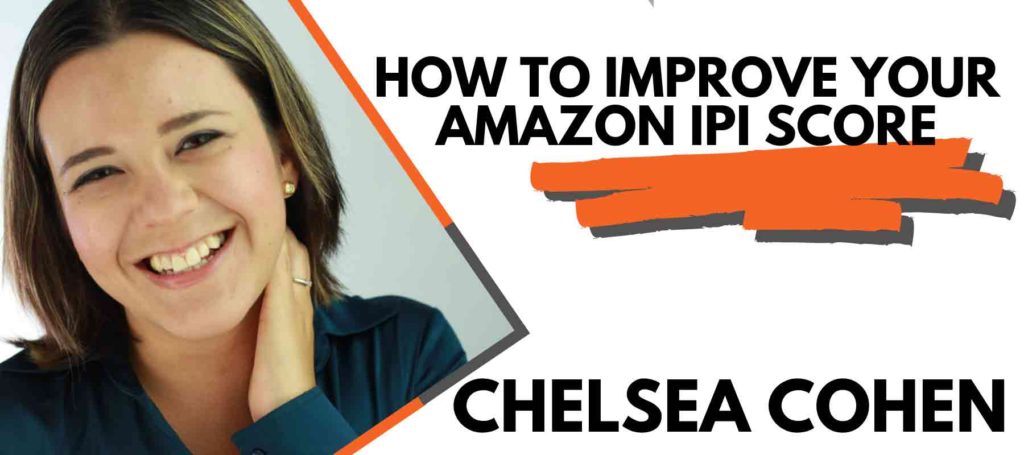

Amazon changing the Inventory Performance Index (IPI) minimum threshold requirement was a big blow to sellers. The new development has pushed sellers to immediately find ways to boost their scores to reach the minimum requirement. Furthermore, this emphasized the importance of IPI to Amazon sellers.
This action hints that Amazon could make more changes that can significantly affect its sellers in the future, so it’s essential to be prepared whenever challenges like this may arise.
Amazon inventory management is your primary solution right now, and there are specific ways that you can improve your Amazon IPI score. Let’s talk about the exact changes that were initiated, the impact those bring, and the next steps to implement to increase your IPI score.

The pandemic and lockdowns have caused Amazon itself to undergo all sorts of inventory issues. People shifting to quarantine lifestyles increased the demand for their resources, and Amazon simply could not keep up. Coupled with that, they have been working with protocols to keep their staff and customers safe and healthy. They were overwhelmed, and so implemented restrictions on how much inventory could be sent into Amazon which further caused problems for sellers.
Sellers have been having a hard time getting inventory checked in to Amazon. The receipt of shipments and loose cartons has been met with constant delays. Sellers haven’t been getting a consistent response from Amazon regarding their requests, making the whole process unpredictable to say the least. All this began within the first few months of U.S. quarantine and seems to have carried, to some degree, into the rest of the year and, honestly, could quite possibly drag into 2021.
On top of all that, back in May 2020, Amazon increased the IPI minimum threshold from 350 to 400. And then again, in July 2020, they raised it further to 500. For sellers with IPI scores below that, it’s a tough pill to swallow as they had little to no time to get their scores up.
Although some have made it, a significant number of sellers were unable to reach the minimum requirement. As a result, they were forced into inventory restrictions that won’t allow them to deliver the same inventory Amazon used to allow.

We’re talking a lot about IPI, but what is it exactly?
The Inventory Performance Index is Amazon’s way to gauge a seller’s performance with regards to their Amazon inventory management. A score from 0 to 1000 gets assigned to you based on how good you are when managing your inventory. To access your score, go to Seller Central, and look for the Inventory dashboard.
No one knows precisely how to calculate the IPI score accurately as Amazon keeps it a secret, but here are the top factors that can influence your score:
This is not a one-size-fits-all situation where one solution can be used on all metrics. These four factors are here to help you decide what steps you have to take to be better at managing inventory within Amazon FBA. Let’s discuss each factor in detail and explore how you can increase your score. Increasing your score also means you’re getting better at inventory management which could result in better cash flow and profitability as well.
Stranded inventory are the units in Amazon’s fulfillment centers with inactive listings. This means you have inventory in FBA that is not linked to live listings and cannot be sold currently. When this happens, it can affect your performance negatively. Amazon is very interested in moving inventory, not in being your personal storage facility so if inventory can’t be sold, Amazon is not too happy. Luckily, there are two ways you can handle stranded inventory:
Sometimes a listing is suspended or for some reason not active on Amazon. When you fix the reason for the suspension, you can effectively relist the product, making the listing live and un-stranding your inventory.
If you are not able to relist your products for whatever reason, whether due to a brand no longer allowing you to sell on their listing or for any other reason, you can place a removal or disposal order to remove the stranded inventory from your account.
It is good practice to check for stranded inventory consistently so you can take the necessary actions to resolve any problems quickly.
Excess Inventory occurs when a product sells slowly due to the overestimation of its consumer demand. One way you can fix this issue is to create removal or disposal orders in Amazon. However, be cautious when taking this step as disposing your stock or returning it to a warehouse will often require you to pay a per unit fee.
If you feel this method will be enough to help you reach the minimum IPI score threshold, then this could be worth doing. Besides, getting rid of products that are difficult to move has more benefits for your business. For starters, excess inventory decreases cash flow by eating up revenue in Amazon storage fees. If these products are not contributing to your profitability and are just collecting fees, it’s better to remove these slow-moving units.
Another way of moving excess inventory is to create a sale or drop the price to move the inventory quickly. Even if your profit is reduced, this may make sense as it will help you to recoup some of your cash to invest in more successful products and will stop the fee bleed.
Sell-through rate refers to the number of units sold in proportion to the product’s inventory in Amazon’s fulfillment centers, computed over the last 90 days on a rolling basis. Put simply, increasing your sales is the main thing you can do to have a better sell-through rate.
But what are the specific steps to take that will help to grow sales? Start by increasing your advertising efforts and working on your listings.
This is the time to tweak prices and offer Lightning Deals or coupons that will encourage customers to make that purchase. Hire a writer that has good copywriting skills specific to the Amazon marketplace or upgrade your images. These improvements to your listing will significantly help your conversions and traffic. You will more easily grab the attention of your target customer, and it will be easier to earn their trust. Once you get the sell-through rate up, your IPI score will start to see improvements.
In addition to these steps, it’s also helpful to think about your systems of logistics. A third-party logistics (3PL) option will be useful when you have a slow-moving product with a high Minimum Order Quantity (MOQ). You can put that product in an outside warehouse, so you don’t have to worry about it affecting your IPI score. A 3PL option might be an added expense, but it could benefit your business long term.
Liquidating and not restocking products with low sell-through rates is another good alternative. Consider this for items that don’t bring much revenue into your business. It’s better to have focus on your top selling products than be weighed down with slow-moving products with high MOQ.

It’s crucial to do your best to prevent stock-outs in order to properly manage your Inventory Health, even as Amazon has created policies that cause problems significantly affecting the sellers’ inventory flow. Delays with pick-ups and check-in times have resulted in sellers not getting their stock into Amazon in a timely manner no matter how they try. It’s no secret that stocking out has been prevalent these past few months. It can be frustrating for sellers to experience all of these challenges, as it can directly and negatively influence their IPI score and restock quantities, creating a dwindling spiral of inventory nightmares.
To overcome these issues, it’s vital to create enough time to make wise decisions. Timing your replenishments to arrive ahead of stock-outs can be tricky, so you have to be as precise and on-the-ball as possible. Knowing and using real-time data will help you to stay on top of this. Set a buffer stock system within both Amazon FBA and your outside warehouse to act as a safety net against stock outs by taking action well in advance of running out.
With the holidays fast approaching, sales will soon see the typical 4th quarter spiking, yet your restock limits may be too slow to respond. For this reason, it is advisable to have not just a third-party warehouse but also an outside fulfillment center in case you need to switch to FBM while waiting for new FBA inventory to check in. Of course, you’ll have to shell out more money, but the benefits are well worth it to avoid missed sales and lost ranking due to stocking out. Simply shift to FBM and have your fulfillment center pick up where FBA left off, and you’re good to go. And the best part, your IPI score won’t suffer.
Third-party warehouses and fulfillment centers will serve as a brilliant back-up plan if and when Amazon fumbles with your shipments. Not only will it relieve logistics-related problems, but it can make your business operations more efficient and profitable as you could find that the added expense evens out when you are avoiding Amazon’s high storage fees. Instead of being handcuffed into relying on Amazon as your only distribution channel, these third-party services will help you to continue operations without unnecessary and costly disruptions.

Amazon’s new shifts in policy can be hard to navigate. But those who take fast action and develop a plan won’t just cope, but create a system even more efficient and profitable than before. Here are the steps you can take to keep your IPI score up and your inventory in stock:
Currently, Amazon requires its sellers to be more proactive with taking care of their IPI score,
with the main goal of managing their inventory successfully. How you operated your business in the past likely won’t cut it anymore. Shooting from the hip is no longer working. It’s time to make the long-postponed upgrade to your logistics systems and work on improving your IPI.
Want to boost your IPI score? With SoStocked, you can automatically factor your IPI limits into your inventory forecasts and reordering. For more insight into understanding IPI and inventory management, join our free monthly Amazon webinars to ask questions about the current inventory issues that may be stopping you from scaling your Amazon business.
Chelsea Cohen is an Amazon seller, speaker & copywriting expert. To solve her own inventory management problems, faced with disappointing options, Chelsea teamed up with Dan Fernandez of Tomoson.com to build out SoStocked.com. After 2 years testing tons of inventory software and crowd-sourcing the best spreadsheets and systems from top 7 and 8 figure sellers, SoStocked’s forecasting algorithm evolved into something completely unique on the market: the first fully customizable, fully understandable inventory management software for Amazon sellers. Chelsea is also well-known for her unique perspective on Amazon listing copy on BadassBusinessBuilders.org, seeing some students and clients achieve increases of over 20% conversions using her techniques. She has been featured on AM/PM Podcast, Seller Stories with Jungle Scout, and the Amazing Summit stage.

Chelsea Cohen is an Amazon seller, speaker & copywriting expert. To solve her own inventory management problems, faced with disappointing options, Chelsea teamed up with Dan Fernandez of Tomoson.com to build out SoStocked.com. After 2 years testing tons of inventory software and crowd-sourcing the best spreadsheets and systems from top 7 and 8 figure sellers, SoStocked’s forecasting algorithm evolved into something completely unique on the market: the first fully customizable, fully understandable inventory management software for Amazon sellers. Chelsea is also well-known for her unique perspective on Amazon listing copy on BadassBusinessBuilders.org, seeing some students and clients achieve increases of over 20% conversions using her techniques. She has been featured on AM/PM Podcast, Seller Stories with Jungle Scout, and the Amazing Summit stage.